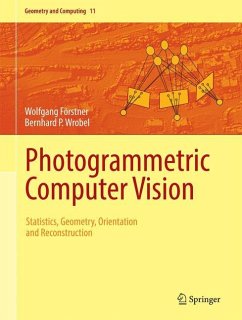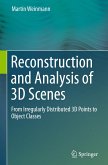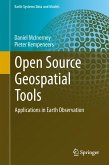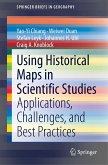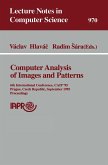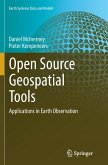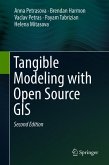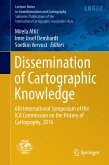This textbook offers a statistical view on the geometry of multiple view analysis, required for camera calibration and orientation and for geometric scene reconstruction based on geometric image features. The authors have backgrounds in geodesy and also long experience with development and research in computer vision, and this is the first book to present a joint approach from the converging fields of photogrammetry and computer vision.
Part I of the book provides an introduction to estimation theory, covering aspects such as Bayesian estimation, variance components, and sequential estimation, with a focus on the statistically sound diagnostics of estimation results essential in vision metrology. Part II provides tools for 2D and 3D geometric reasoning using projective geometry. This includes oriented projective geometry and tools for statistically optimal estimation and test of geometric entities and transformations and their relations, tools that are useful also in the context of uncertain reasoning in point clouds. Part III is devoted to modelling the geometry of single and multiple cameras, addressing calibration and orientation, including statistical evaluation and reconstruction of corresponding scene features and surfaces based on geometric image features. The authors provide algorithms for various geometric computation problems in vision metrology, together with mathematical justifications and statistical analysis, thus enabling thorough evaluations. The chapters are self-contained with numerous figures and exercises, and they are supported by an appendix that explains the basic mathematical notation and a detailed index.
The book can serve as the basis for undergraduate and graduate courses in photogrammetry, computer vision, and computer graphics. It is also appropriate for researchers, engineers, and software developers in the photogrammetry and GIS industries, particularly those engaged with statistically based geometriccomputer vision methods.
Part I of the book provides an introduction to estimation theory, covering aspects such as Bayesian estimation, variance components, and sequential estimation, with a focus on the statistically sound diagnostics of estimation results essential in vision metrology. Part II provides tools for 2D and 3D geometric reasoning using projective geometry. This includes oriented projective geometry and tools for statistically optimal estimation and test of geometric entities and transformations and their relations, tools that are useful also in the context of uncertain reasoning in point clouds. Part III is devoted to modelling the geometry of single and multiple cameras, addressing calibration and orientation, including statistical evaluation and reconstruction of corresponding scene features and surfaces based on geometric image features. The authors provide algorithms for various geometric computation problems in vision metrology, together with mathematical justifications and statistical analysis, thus enabling thorough evaluations. The chapters are self-contained with numerous figures and exercises, and they are supported by an appendix that explains the basic mathematical notation and a detailed index.
The book can serve as the basis for undergraduate and graduate courses in photogrammetry, computer vision, and computer graphics. It is also appropriate for researchers, engineers, and software developers in the photogrammetry and GIS industries, particularly those engaged with statistically based geometriccomputer vision methods.
"Photogrammetric Computer Vision represents a milestone publication in modern photogrammetry. ... The excellence of the material in this book is undergirded by careful cross-referencing and the occasional use of a didactic manner whereby important concepts, when they are first introduced, are written in italics in the outer margins." (Charles Toth, Photogrammetric Engineering & Remote Sensing, Vol. 83 (10), October, 2017)
"This book is a great achievement. ... it gives a comprehensive overview of the geometrical concepts of photogrammetry and computer vision. ... it will be invaluable as a book of reference for graduate students, researchers, software engineers and practitioners aswell as for teachers involved in these subjects." (Franz Rottensteiner, Journal of Photogrammetry, Remote Sensing and Geoinformation Science, Vol. 85 (3), August, 2017)
"This book on Photogrammetric Computer Vision can thus be seen as a logical continuation of the authors' academic work, dedicated to building bridges between photogrammetry and computer vision. ... this book forms a rich body of state-of-the-art knowledge in image geometry and related problems." (Markus Gerke, The Photogrammetric Record, June, 2017)
"This book is one of two volumes on photogrammetric computer vision. This volume focuses on geometric image analysis based on statistics ... . This is an excellent textbook. It can be used in higher education at BSc. and MSc. levels. The authors gives different education programs with different objectives to be achieved. This greatly helps to use the book." (Attila Fazekas, zbMATH, 1372.68002, 2017)
"This book is a great achievement. ... it gives a comprehensive overview of the geometrical concepts of photogrammetry and computer vision. ... it will be invaluable as a book of reference for graduate students, researchers, software engineers and practitioners aswell as for teachers involved in these subjects." (Franz Rottensteiner, Journal of Photogrammetry, Remote Sensing and Geoinformation Science, Vol. 85 (3), August, 2017)
"This book on Photogrammetric Computer Vision can thus be seen as a logical continuation of the authors' academic work, dedicated to building bridges between photogrammetry and computer vision. ... this book forms a rich body of state-of-the-art knowledge in image geometry and related problems." (Markus Gerke, The Photogrammetric Record, June, 2017)
"This book is one of two volumes on photogrammetric computer vision. This volume focuses on geometric image analysis based on statistics ... . This is an excellent textbook. It can be used in higher education at BSc. and MSc. levels. The authors gives different education programs with different objectives to be achieved. This greatly helps to use the book." (Attila Fazekas, zbMATH, 1372.68002, 2017)

